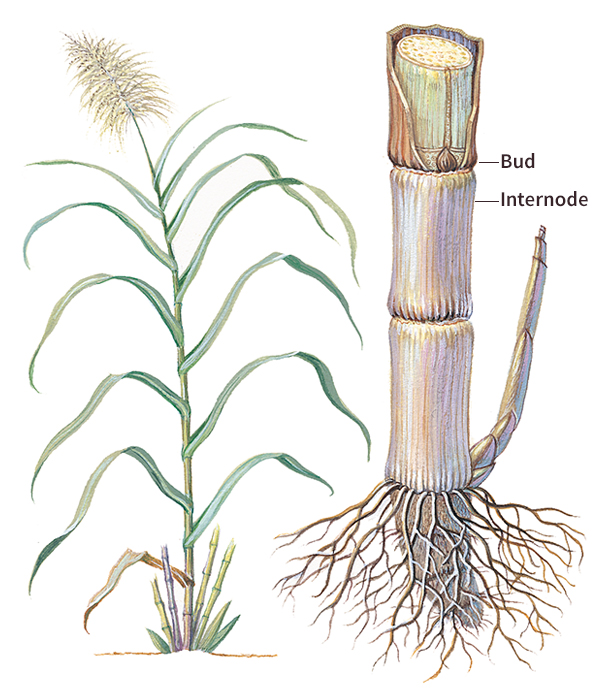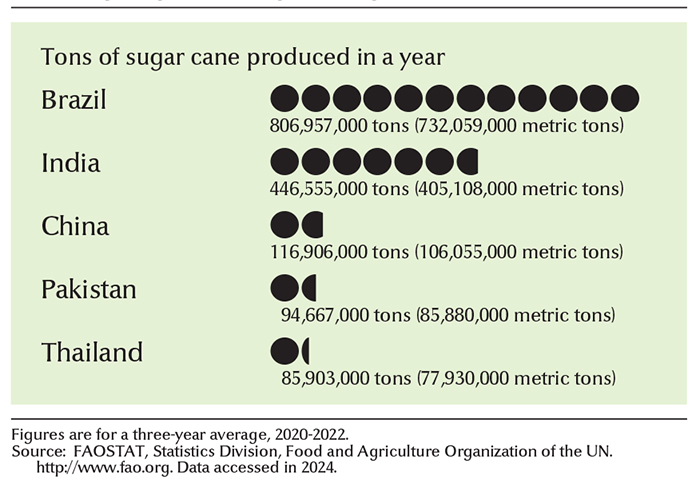Sugar cane is a tall grass plant that grows in tropical and semitropical countries. Sugar cane plants consist of sturdy stalks 7 to 30 feet (2 to 9 meters) high and about 2 inches (5 centimeters) in diameter. These stalks contain a large amount of sugary juice from which sugar and molasses are made. The plant fiber that remains after the juice is extracted is frequently burned as fuel to generate electricity. The fiber may also be used to make fiberboard and paper.

Sugar cane grows as tillers (shoots) from underground branches called rhizomes. The numerous stalks above ground have no branches, but they have long, narrow leaves that are arranged in two rows. The sugar-cane stalk is divided into several sections, like a bamboo cane. These sections, which are called internodes, are connected by joints known as nodes. Each node bears a bud, much like a potato eye. The buds can be used to plant a new crop. The color of the stem varies from yellow to reddish.
South Pacific islanders grew sugar cane more than 8,000 years ago. The plant was also widely grown in ancient India. Its cultivation and refining spread from India to China about 100 B.C. but did not reach Europe until about A.D. 636. Colonizers brought sugar cane to America and the Caribbean region during the 1500’s. Today, the leading sugar-cane growing nations include Brazil, China, India, Pakistan, and Thailand. Florida and Louisiana are the leading U.S. cane-producing states.

Growth and cultivation.
Most sugar cane is grown in regions where temperatures generally range between 75 and 86 °F (24 and 30 °C) and where rainfall is high. Sugar cane needs about 60 to 120 inches (150 to 300 centimeters) of water a year. In regions with little rainfall, growers irrigate the plants.
Sugar cane is grown chiefly from stem cuttings placed in furrows (narrow grooves) in the field and covered with soil. The buds on the nodes germinate into leafy shoots that emerge from the soil. In a few weeks, the shoots produce stalks with nodes and internodes. The underground nodal buds then germinate to produce the tillers that make up the multistalked plant.
Harvesting.
Most sugar cane is harvested from 8 to 24 months after planting. In some countries, particularly Australia and the United States, machines are used to cut off the cane stalks. But in most other sugar-cane growing areas, workers cut the cane by hand using a large steel knife called a machete. The cut stalks are gathered into heaps called windrows and then placed into carts, trucks, or railway cars that take them to the sugar mill. The stubble left in the field produces from 2 to 10 additional crops, depending on the location.
For a detailed discussion of how sugar is obtained from sugar cane, see Sugar (Sugar production) .
